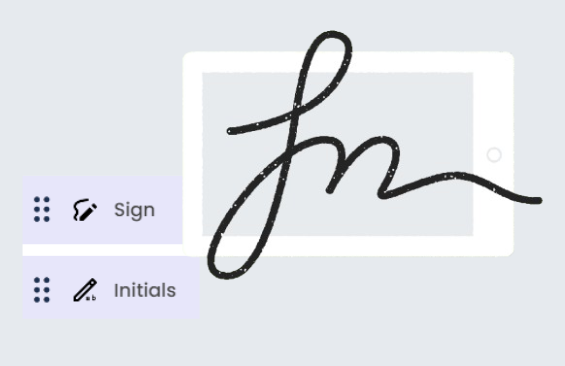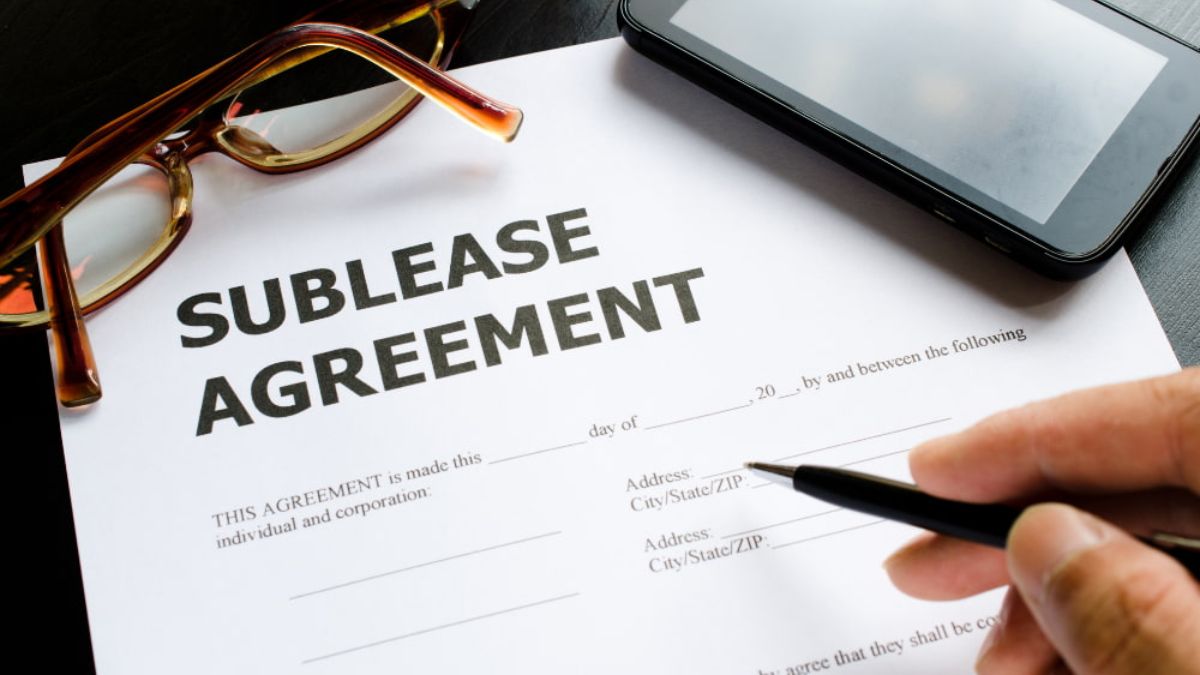A sublease agreement is a contract that allows the tenant of a property (the original lessee) to lease it out to another person (the sublessee) while retaining responsibility for the original lease. Subleasing can be an excellent solution for tenants who need to vacate their rental before the lease term ends but want to avoid breaking their lease. This article will guide you through the process of creating a comprehensive sublease agreement and explain the critical clauses you need to include.
1. Parties Involved
This clause identifies the original tenant (sublessor) and the new tenant (sublessee) along with their contact information.
Details:
- Sublessor: The original tenant who is subleasing the property.
- Sublessee: The new tenant taking over the lease from the sublessor.
- Landlord: The property owner or manager who holds the primary lease agreement with the sublessor.
Including detailed contact information for all parties ensures clarity and facilitates communication throughout the sublease period.
Read More: How to Create a Property Management Agreement
2. Property Description
The property description clause specifies the exact location and details of the rental property being subleased.
Details:
- Address: Full address of the property including unit or apartment number.
- Description: Any specific details about the property, such as the type (e.g., apartment, house), number of rooms, and any unique features.
This clause ensures that there is no ambiguity about which property is being subleased.
3. Term of Sublease
This clause defines the start and end dates of the sublease period.
Details:
- Start Date: The date when the sublessee will begin occupancy.
- End Date: The date when the sublessee’s occupancy will end.
- Extension/Renewal: Any provisions for extending or renewing the sublease term.
Clearly defining the term helps avoid misunderstandings about the duration of the sublease.
4. Rent
This clause specifies the amount of rent the sublessee is required to pay and how it should be paid.
Details:
- Amount: The monthly rent amount.
- Due Date: When the rent is due each month.
- Payment Method: How the rent should be paid (e.g., check, electronic transfer).
- Late Fees: Any fees applicable if the rent is paid late.
This clause ensures that both parties are clear about the financial obligations under the sublease.
5. Security Deposit
This clause outlines the security deposit required from the sublessee and the conditions for its return.
Details:
- Amount: The security deposit amount.
- Usage: Conditions under which the deposit can be used (e.g., damages, unpaid rent).
- Return: The timeline and conditions for returning the deposit after the sublease ends.
A clear security deposit clause helps protect the financial interests of both parties.

Create Your Sublease Agreement
Generate a Sublease Agreement effortlessly with Legitt AI’s contract generator.
Create Sublease Agreement6. Utilities and Maintenance
This clause details the responsibilities of the sublessee regarding utilities and maintenance.
Details:
- Utilities: Which utilities (e.g., electricity, water, internet) the sublessee is responsible for.
- Maintenance: The sublessee’s responsibilities for maintaining the property and any specific maintenance tasks they must perform.
- Repairs: Procedures for handling necessary repairs and maintenance issues.
Clearly defining these responsibilities helps avoid disputes over utility payments and property upkeep.
7. Use of Premises
This clause defines how the sublessee is allowed to use the property.
Details:
- Purpose: The approved use of the property (e.g., residential, office).
- Restrictions: Any restrictions on use (e.g., no pets, no smoking).
- Compliance: Requirement for the sublessee to comply with all applicable laws and the terms of the original lease.
This clause ensures that the property is used appropriately and helps protect the interests of the sublessor and landlord.
8. Consent of Landlord
This clause addresses the need for the landlord’s consent to the sublease.
Details:
- Approval: Confirmation that the landlord has approved the sublease.
- Conditions: Any conditions the landlord has set for their approval.
- Contact: Instructions for how the sublessor should contact the landlord to obtain approval.
Obtaining landlord consent is crucial to ensure the sublease is valid and enforceable.
9. Sublessee’s Obligations
This clause outlines the sublessee’s obligations under the sublease agreement.
Details:
- Original Lease Compliance: Requirement for the sublessee to comply with the terms of the original lease.
- Additional Rules: Any additional rules or policies specific to the sublease.
- Liability: The sublessee’s liability for any damages or breaches of the sublease.
Clearly stating the sublessee’s obligations helps ensure they understand and agree to their responsibilities.
Read More: How to Create an Indemnity Agreement
10. Indemnification
This clause explains the indemnification obligations of the sublessee.
Details:
- Indemnity: The sublessee agrees to indemnify and hold harmless the sublessor and landlord from any claims arising from the sublessee’s use of the property.
- Scope: The scope of the indemnity, including any exclusions or limitations.
An indemnification clause provides legal protection to the sublessor and landlord.
11. Insurance
This clause addresses any insurance requirements for the sublessee.
Details:
- Requirements: Any specific insurance policies the sublessee must maintain (e.g., renter’s insurance).
- Proof: Requirement for the sublessee to provide proof of insurance.
Requiring insurance helps protect all parties in the event of property damage or other losses.

12. Termination
This clause outlines the conditions under which the sublease can be terminated.
Details:
- Notice: The notice period required for either party to terminate the sublease.
- Grounds: Acceptable grounds for termination (e.g., breach of terms, non-payment of rent).
- Procedure: The procedure for giving notice of termination.
A clear termination clause helps ensure that both parties understand how and when the sublease can be ended.
13. Dispute Resolution
This clause specifies how disputes between the sublessor and sublessee will be resolved.
Details:
- Method: The preferred method of dispute resolution (e.g., mediation, arbitration).
- Jurisdiction: The jurisdiction where any legal disputes will be resolved.
- Costs: How the costs of dispute resolution will be handled.
Having a dispute resolution clause can help resolve conflicts more efficiently and amicably.
14. Governing Law
This clause identifies the law that will govern the sublease agreement.
Details:
- Jurisdiction: The state or country whose laws will apply to the sublease.
- Interpretation: How the governing law will influence the interpretation of the sublease.
Specifying the governing law provides clarity on which legal framework will be used in case of disputes.
For EsignGenerate Your Electronic Signature Instantly
Make your own Electronic Signature in minutes using Legitt AI.
Try Making Your Signature
15. Signatures
This clause includes the signatures of all parties involved to indicate their agreement to the terms of the sublease.
Details:
- Sublessor: Signature and printed name of the sublessor.
- Sublessee: Signature and printed name of the sublessee.
- Landlord: Signature and printed name of the landlord (if required).
Signatures are essential for making the sublease agreement legally binding.
Read More: How to Write a Contract
Did you find this article worthwhile? More engaging blogs about smart contracts on the blockchain, contract management software and electronic signatures can be found in the Legitt Blogs section. You may also contact Legitt to hire the best contract lifecycle management services and solutions along with free contract templates.
FAQs on sublease agreement
What is a sublease agreement?
A sublease agreement is a legal document that allows a tenant to rent out their leased property to another person while retaining responsibility for the original lease. It involves three parties: the original tenant (sublessor), the new tenant (sublessee), and the landlord. The sublessee takes over the lease obligations from the sublessor but the sublessor remains liable to the landlord.
Why do I need a sublease agreement?
A sublease agreement is essential to legally formalize the arrangement between the sublessor and sublessee. It protects both parties by clearly outlining the terms of the sublease, including rent, responsibilities, and duration. Without a sublease agreement, there could be legal and financial risks if disputes arise.
Do I need the landlord’s consent to sublease my apartment?
Yes, in most cases, the original lease agreement requires the tenant to obtain the landlord’s consent before subleasing. This ensures that the landlord is aware of and agrees to the new tenant occupying the property. Failing to get the landlord’s consent can lead to legal consequences and potentially void the sublease agreement.
What should be included in the property description clause?
The property description clause should include the full address of the property, including the unit or apartment number if applicable. It should also describe any specific details about the property, such as the type (e.g., apartment, house), number of rooms, and any unique features. This ensures there is no ambiguity about the property being subleased.
How do I determine the rent amount in a sublease agreement?
The rent amount in a sublease agreement is typically based on the rent amount in the original lease agreement. However, the sublessor may choose to adjust it based on market conditions, the length of the sublease term, or other factors. Both parties should agree on the rent amount and include it in the sublease agreement.
What is the purpose of a security deposit clause?
The security deposit clause outlines the amount of the security deposit, the conditions under which it can be used, and the procedure for returning it. This clause protects the sublessor by providing funds to cover damages or unpaid rent. It also protects the sublessee by specifying the conditions for the return of the deposit.
Who is responsible for paying utilities in a sublease agreement?
The responsibility for paying utilities should be clearly outlined in the sublease agreement. The agreement should specify which utilities the sublessee is responsible for and how they should be paid. This helps avoid disputes over utility payments during the sublease term.
Can I include restrictions on the use of the property in a sublease agreement?
Yes, the sublease agreement can include restrictions on the use of the property. Common restrictions include prohibitions on pets, smoking, or conducting business activities. These restrictions help ensure the property is used appropriately and in accordance with the terms of the original lease.
What happens if the sublessee violates the terms of the sublease agreement?
If the sublessee violates the terms of the sublease agreement, the sublessor may have the right to terminate the sublease. The specific grounds for termination and the procedure for giving notice should be outlined in the termination clause. The sublessee may also be held liable for any damages resulting from the violation.
How are disputes resolved in a sublease agreement? The
The dispute resolution clause specifies how disputes between the sublessor and sublessee will be resolved. Common methods include mediation, arbitration, or legal action in a specified jurisdiction. This clause helps ensure that disputes are resolved efficiently and fairly.
What is the governing law clause?
The governing law clause identifies the state or country whose laws will apply to the sublease agreement. This provides clarity on the legal framework that will be used to interpret and enforce the sublease. It is important to specify the governing law to avoid legal uncertainties.
Why are signatures important in a sublease agreement?
Signatures are important because they indicate that all parties involved have read, understood, and agreed to the terms of the sublease agreement. The signatures of the sublessor, sublessee, and landlord (if required) make the agreement legally binding. This helps protect the rights and interests of all parties.
Can a sublease agreement be renewed or extended?
Yes, a sublease agreement can include provisions for renewal or extension. The terms and conditions for renewing or extending the sublease should be clearly outlined in the sublease agreement. Both parties must agree to the renewal or extension for it to be valid.
What is indemnification in a sublease agreement?
Indemnification is a clause where the sublessee agrees to indemnify and hold harmless the sublessor and landlord from any claims arising from the sublessee’s use of the property. This means the sublessee will cover any losses or damages resulting from their actions. It provides legal protection to the sublessor and landlord.
What types of insurance are typically required in a sublease agreement?
Common types of insurance required in a sublease agreement include renter’s insurance to cover personal property and liability. The sublease agreement should specify the insurance requirements and the need for the sublessee to provide proof of insurance. This helps protect all parties in case of property damage or other losses.
